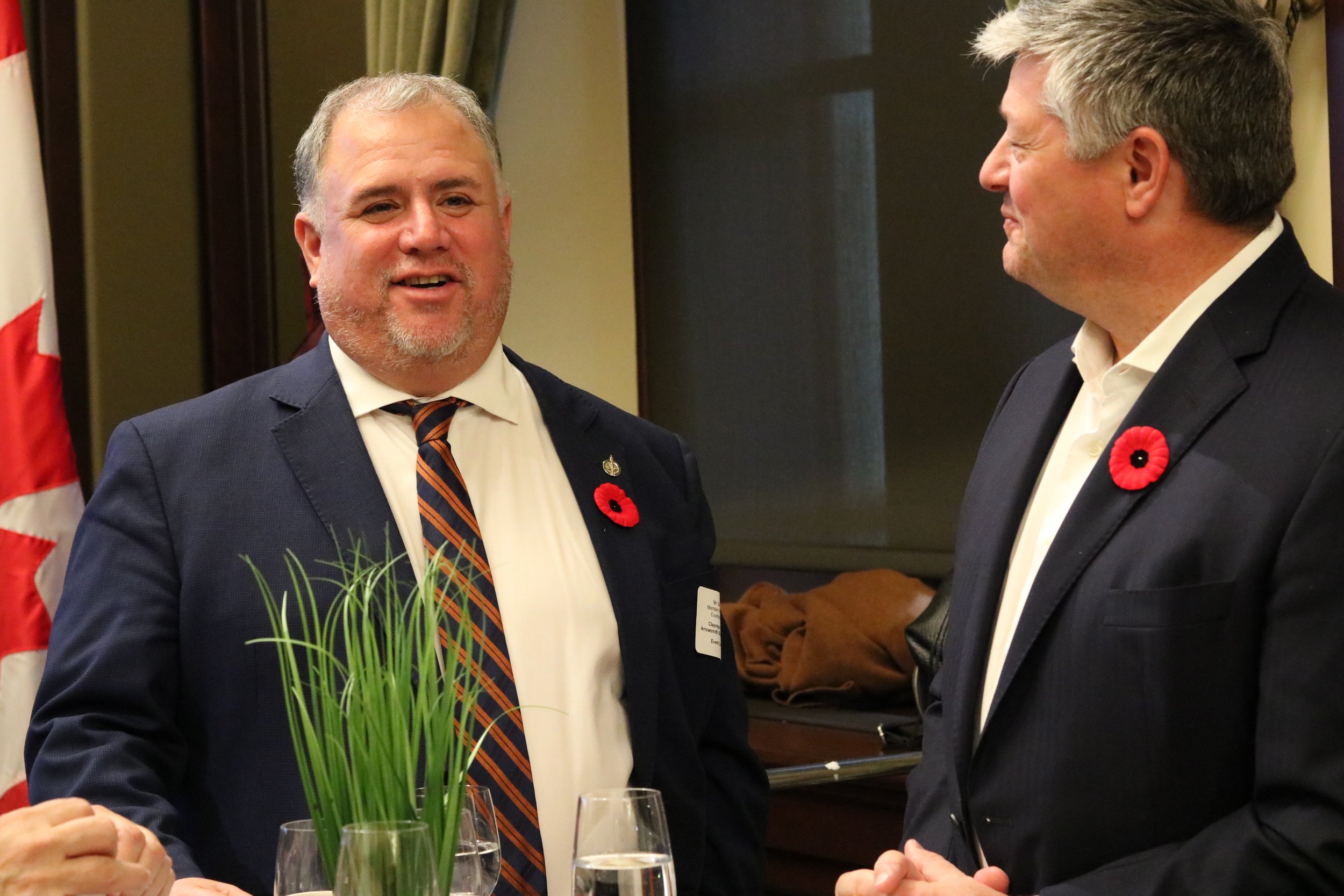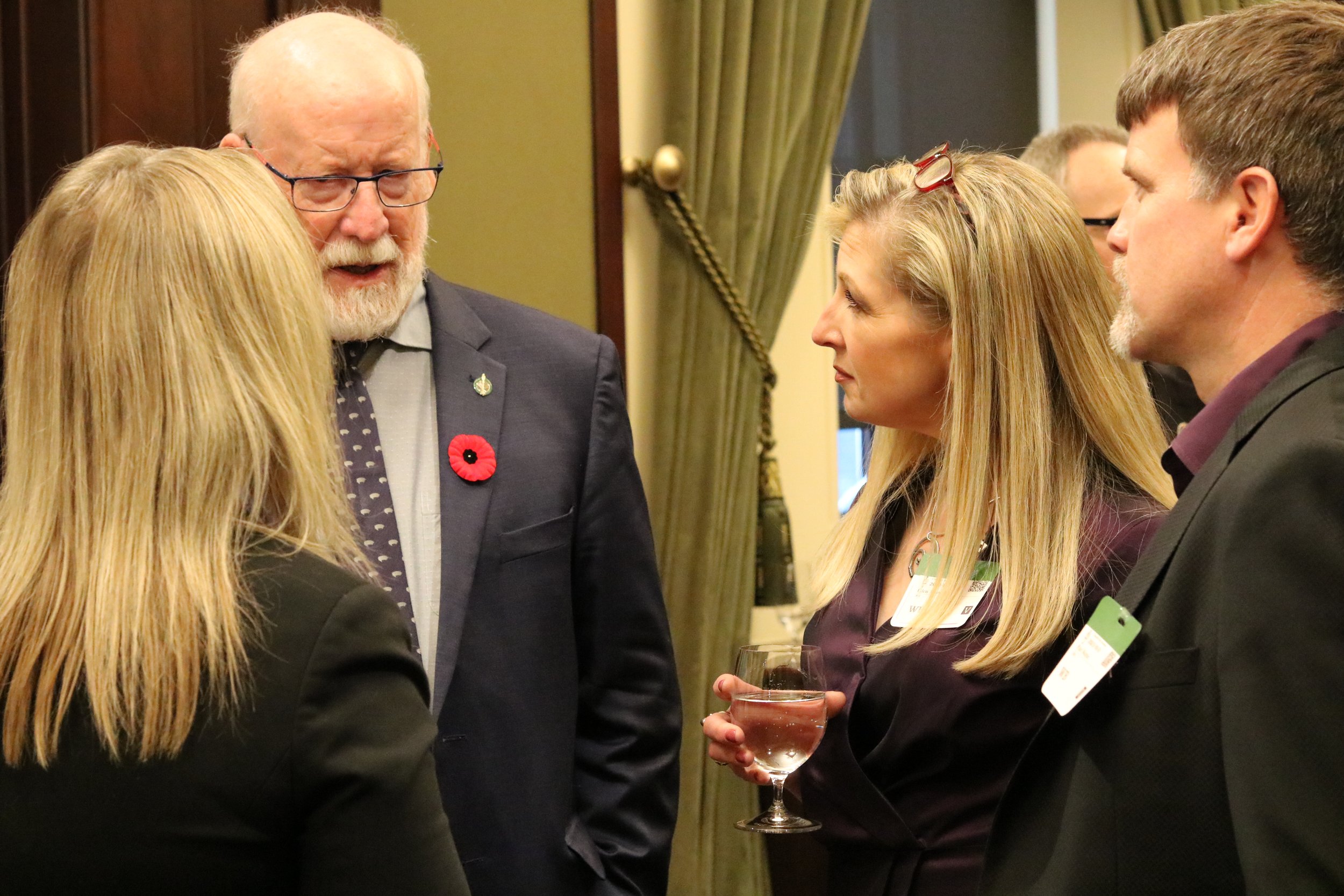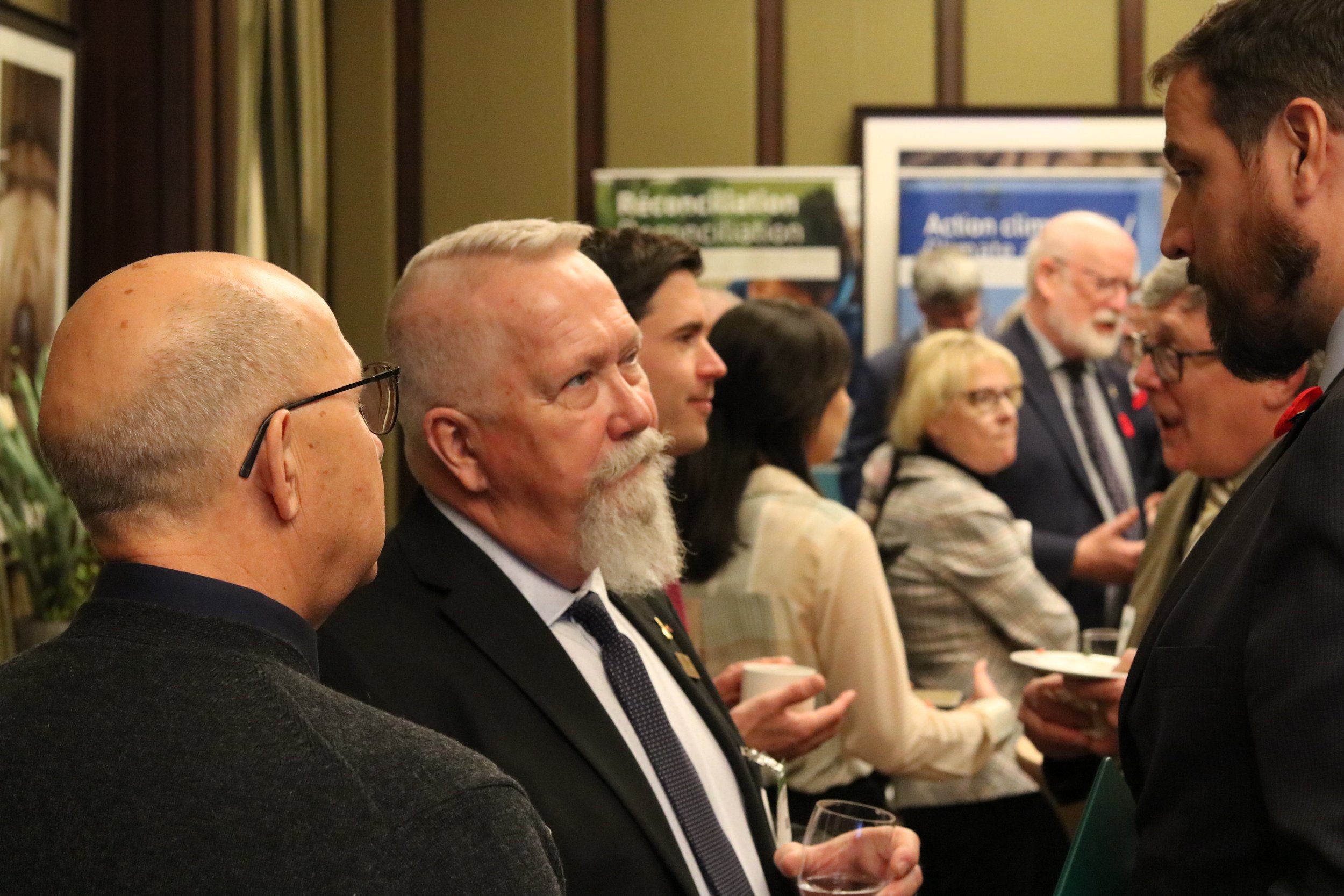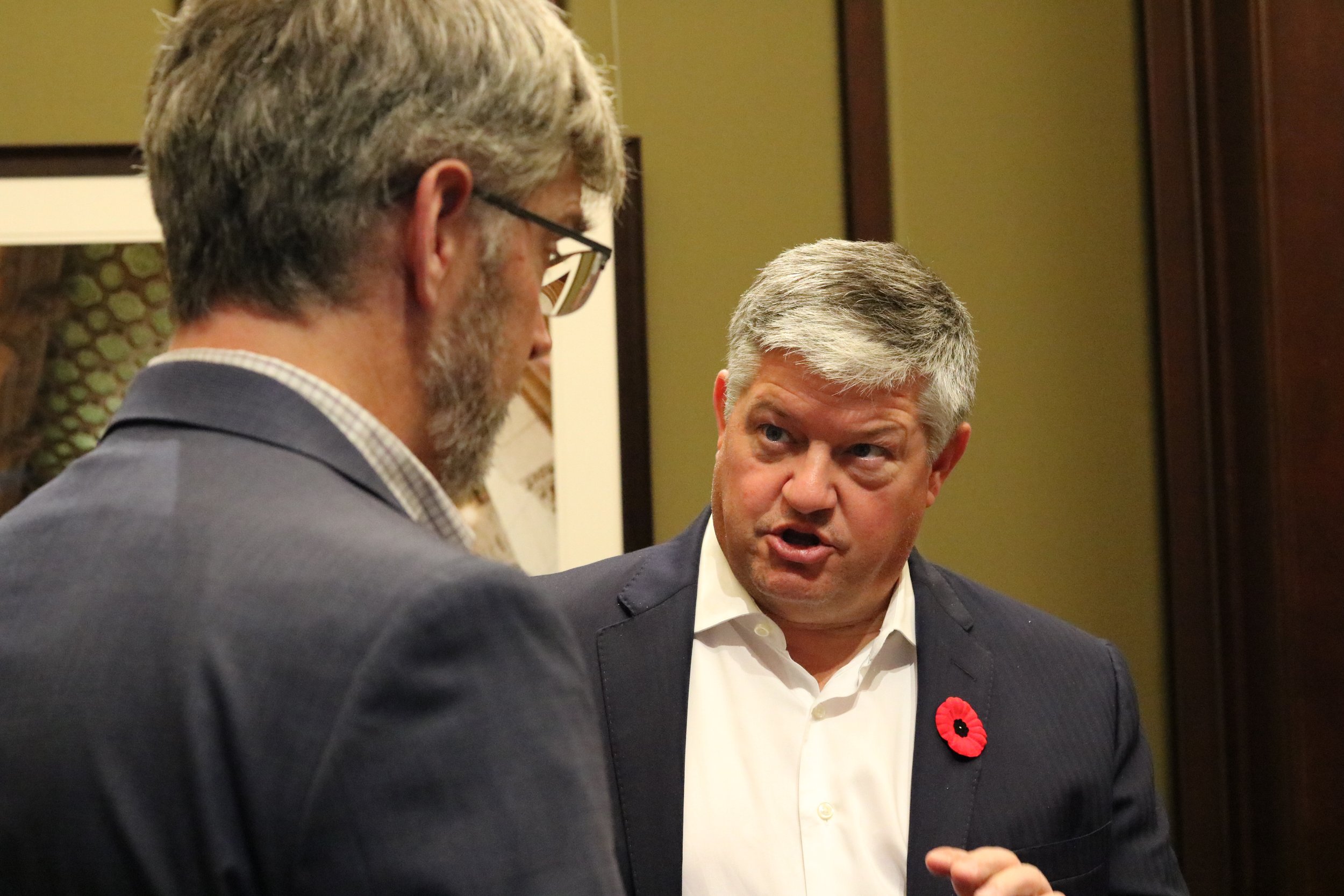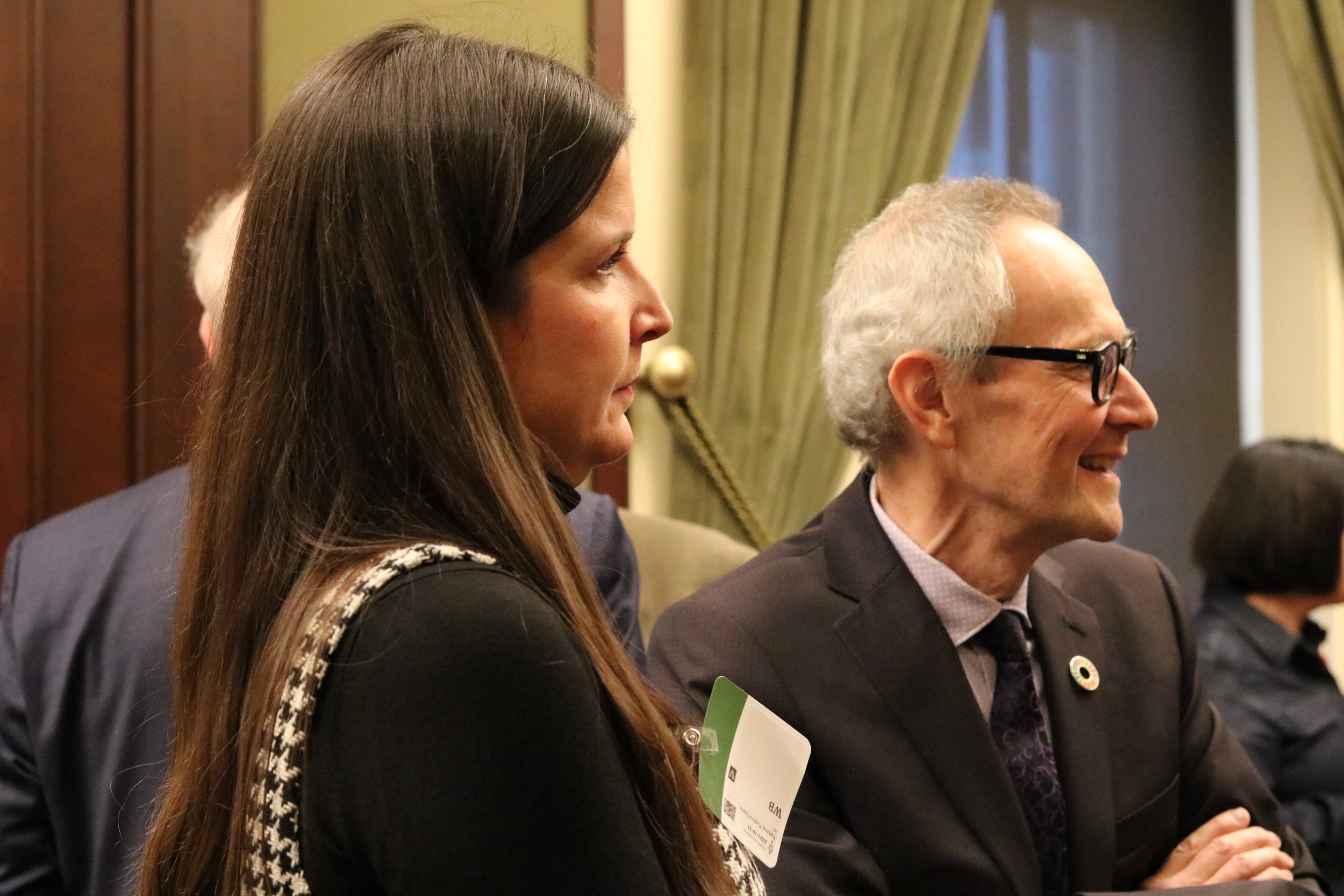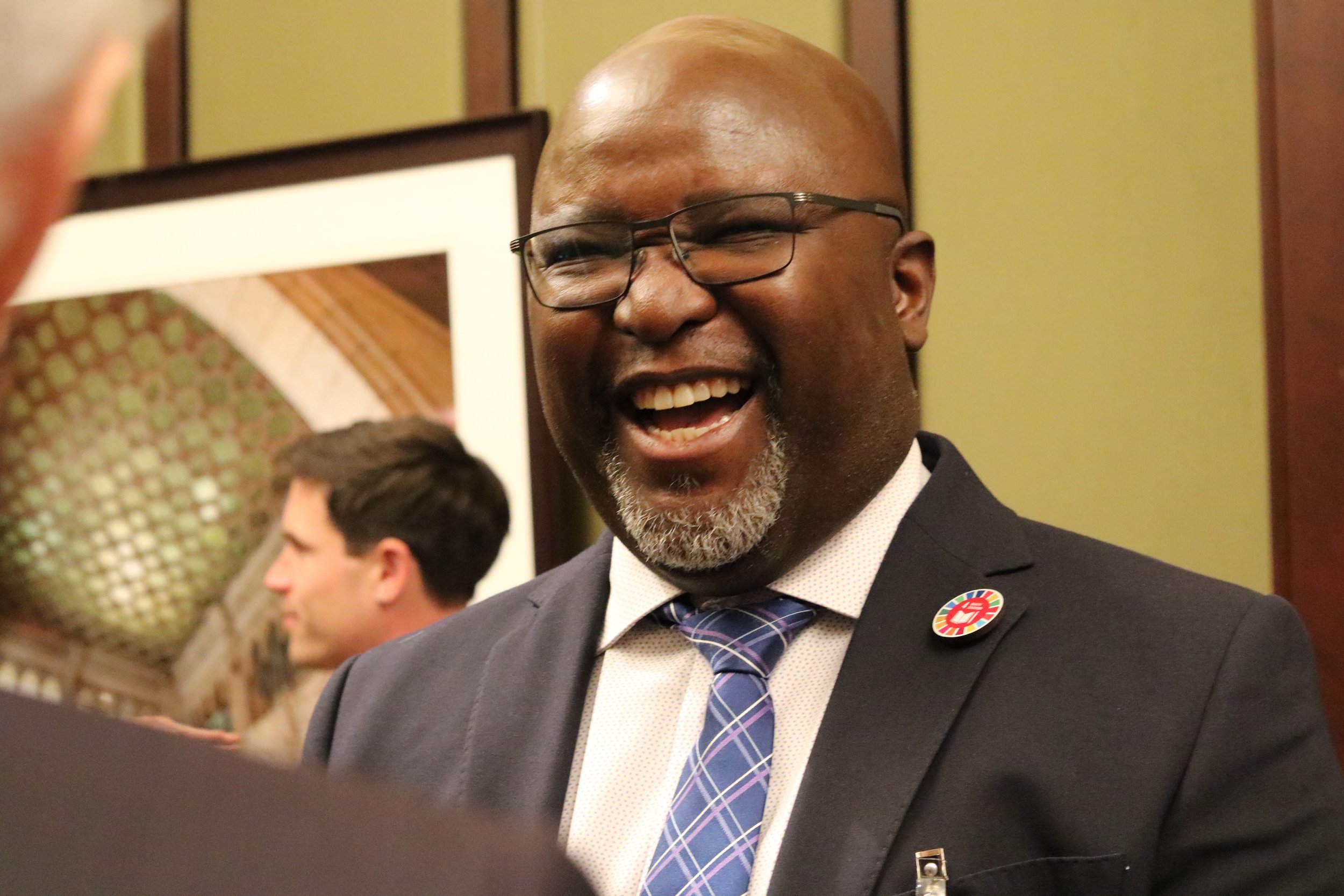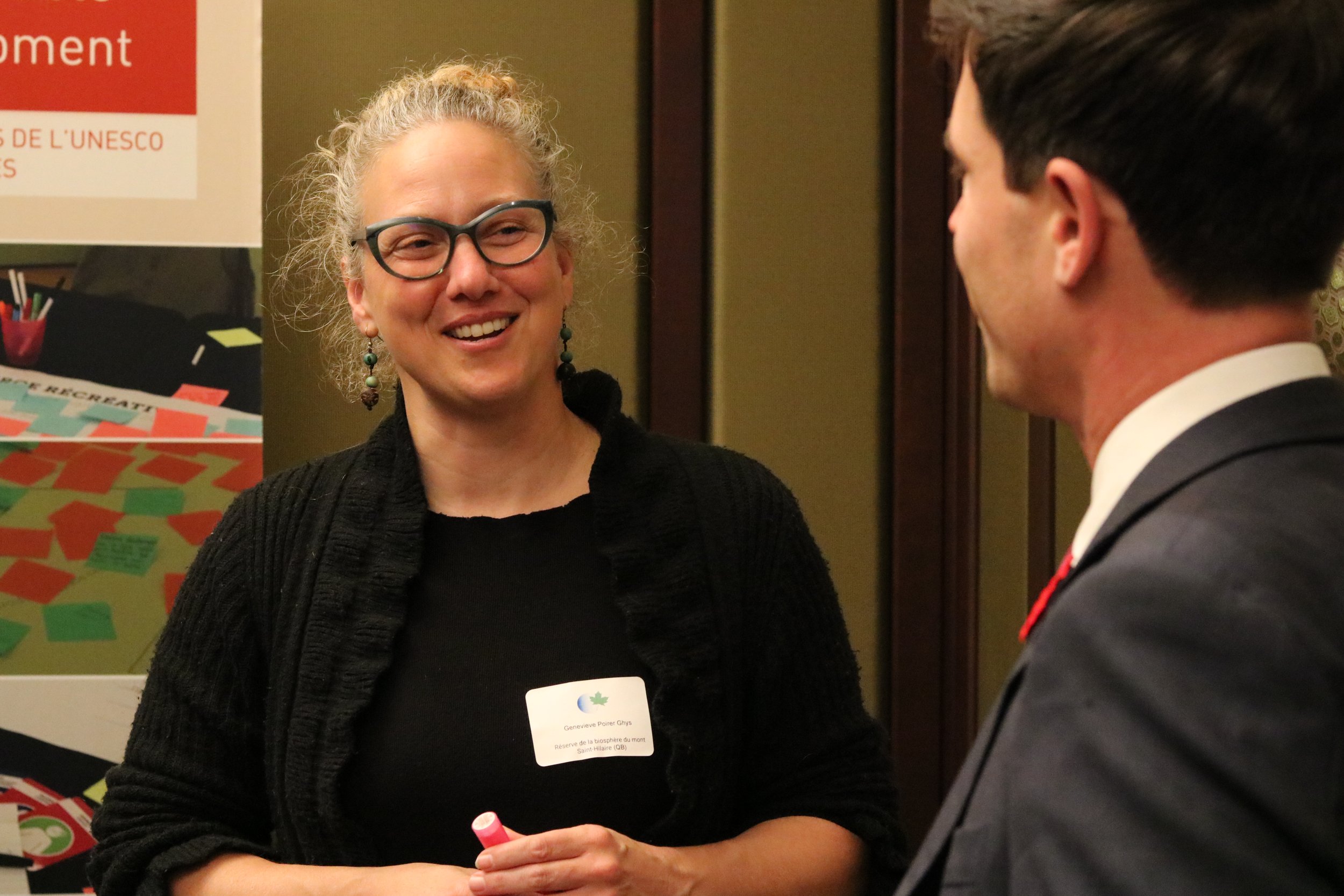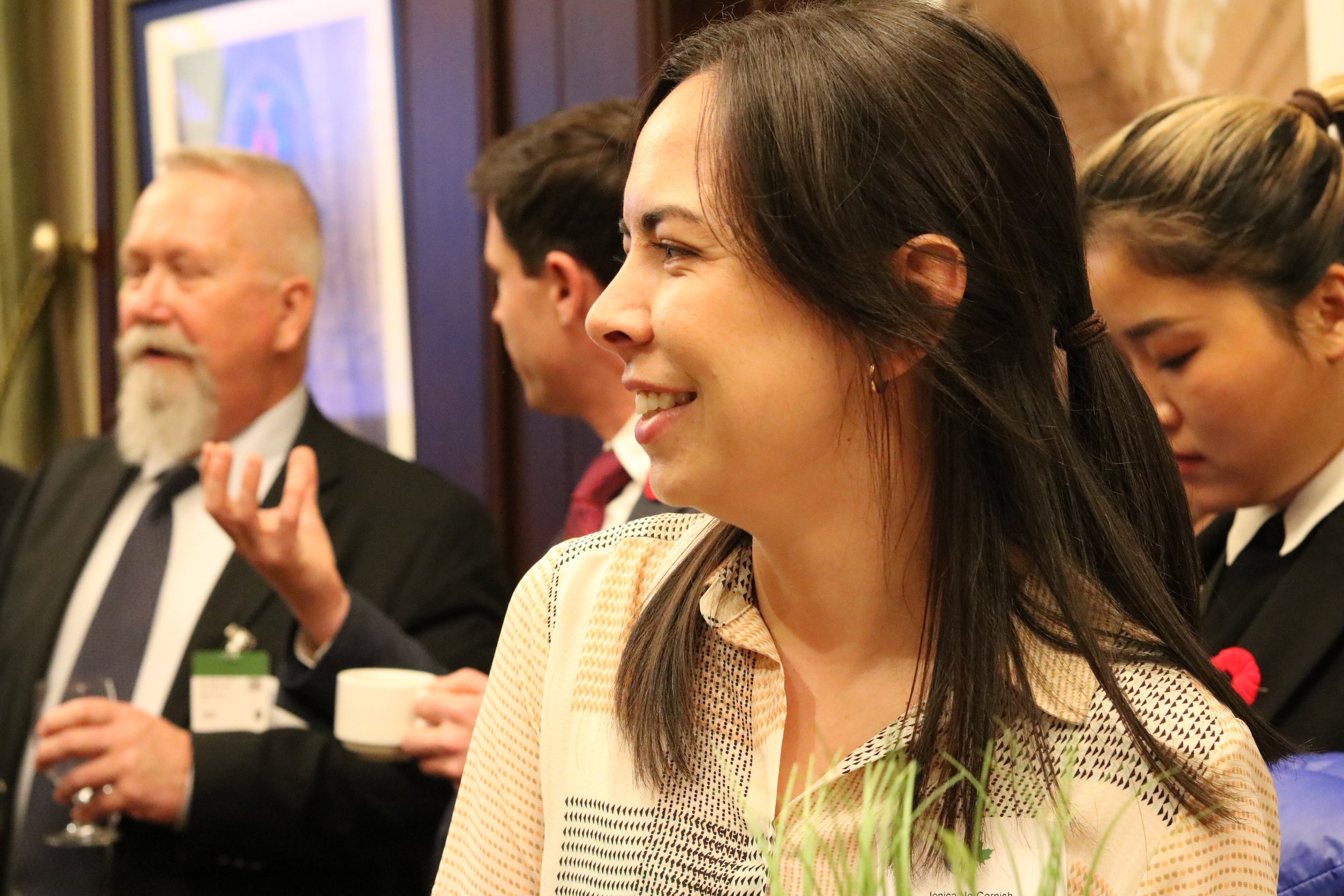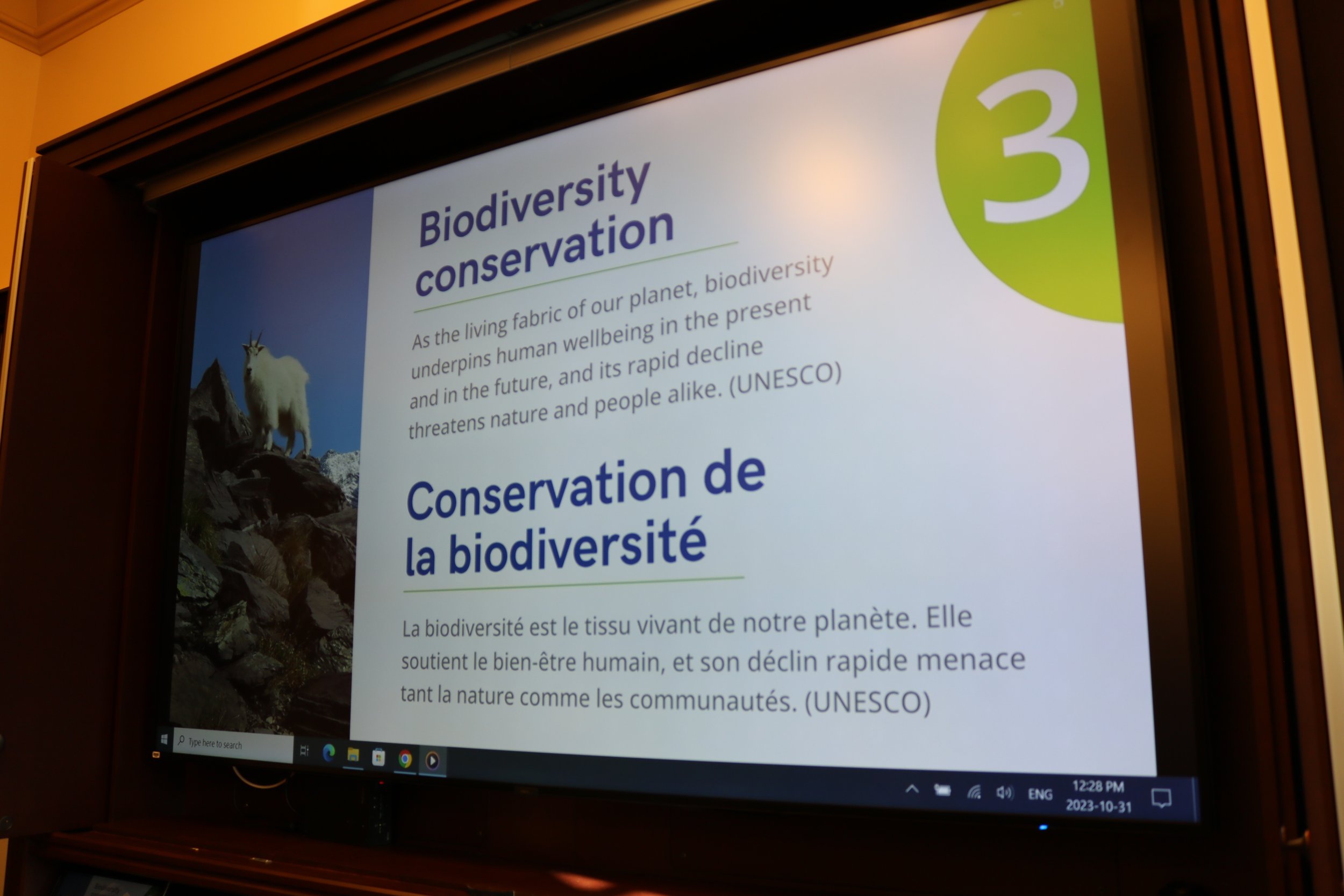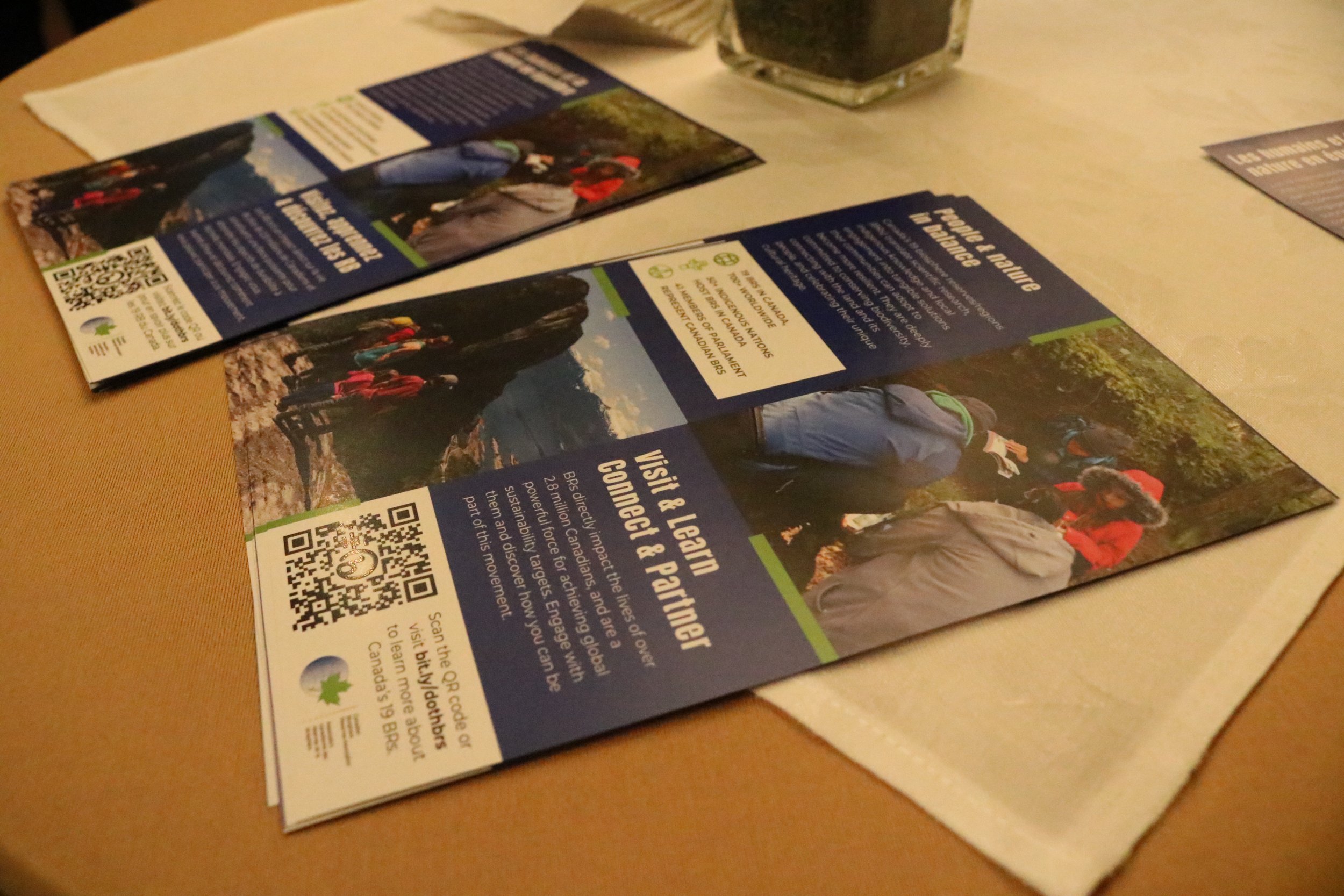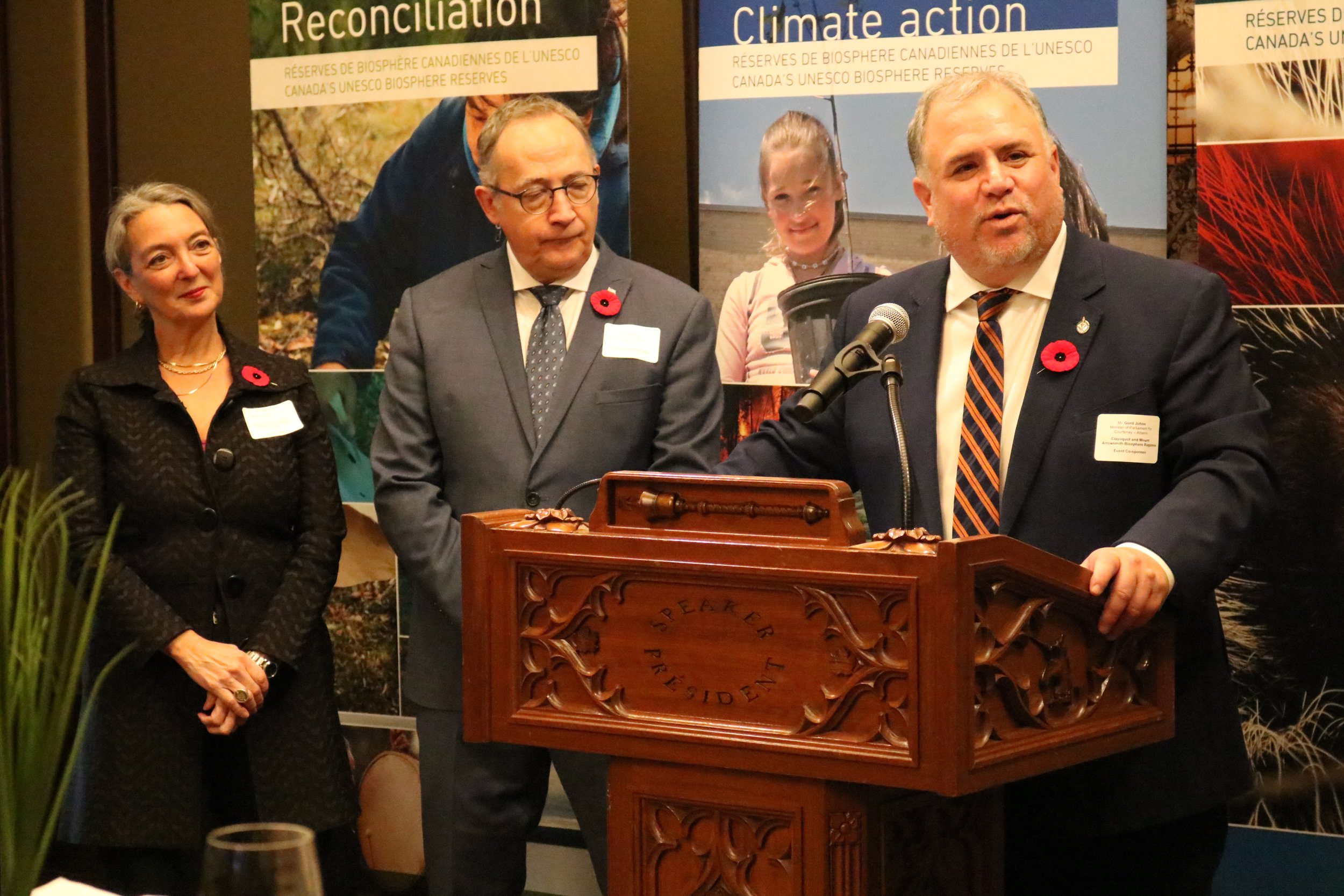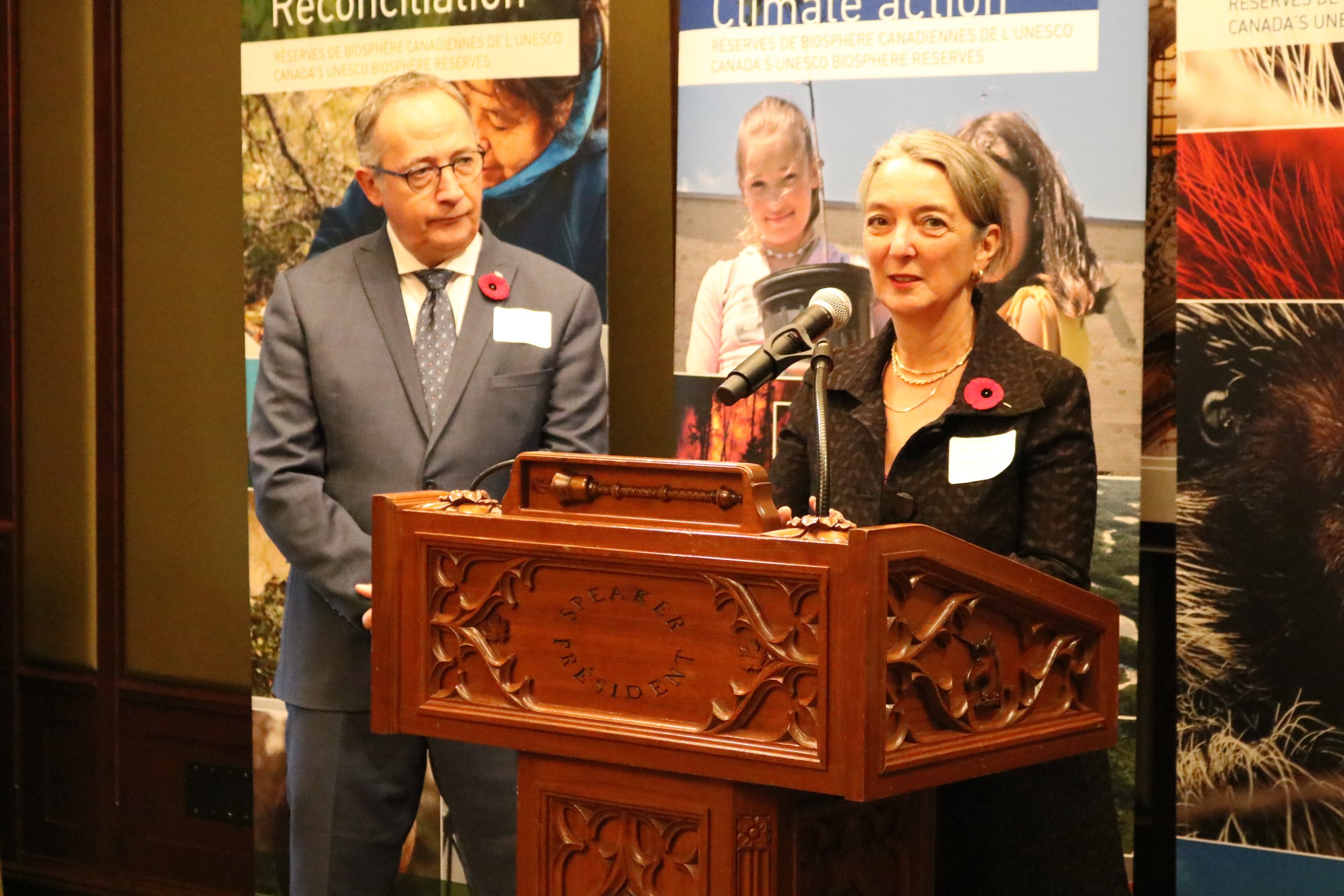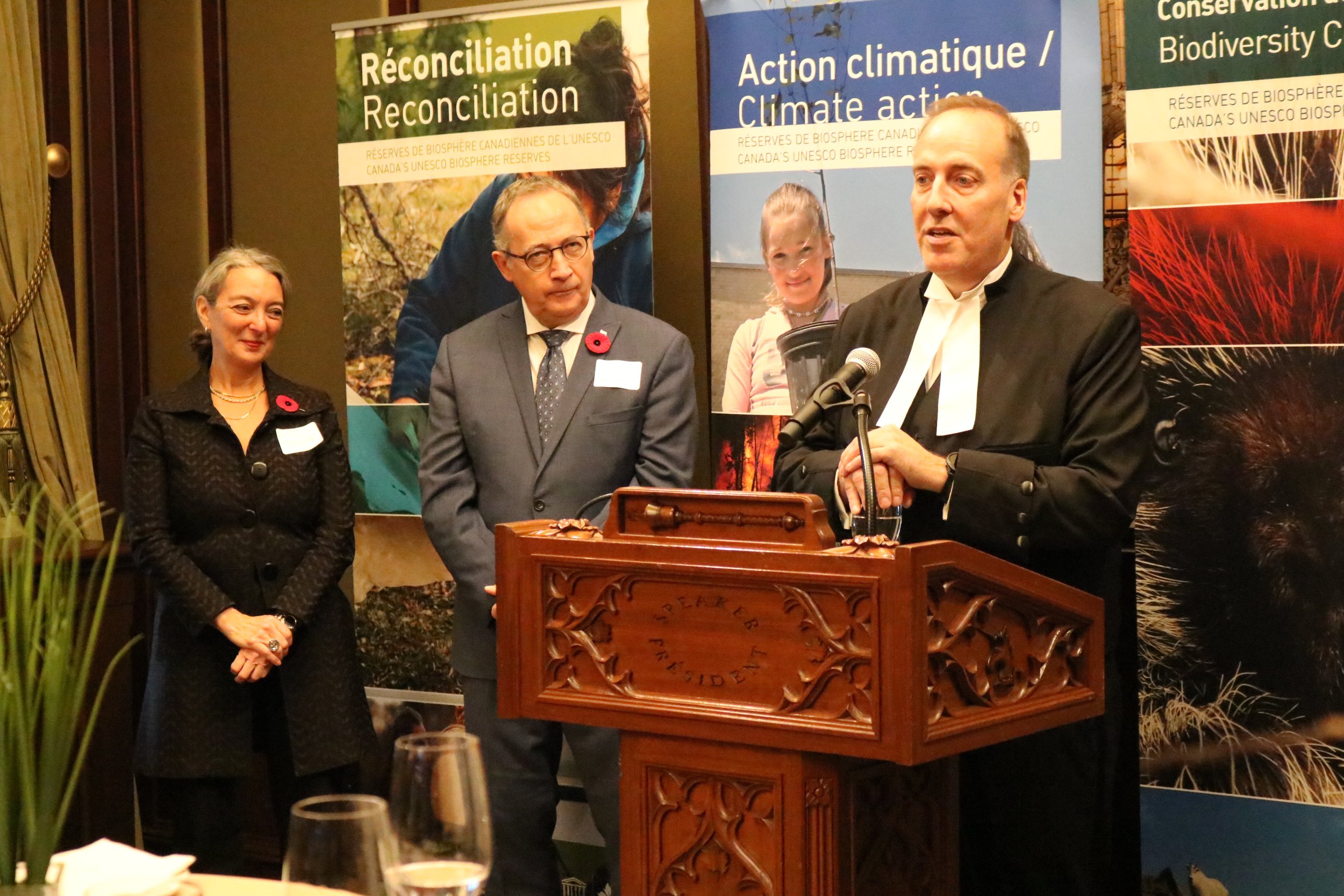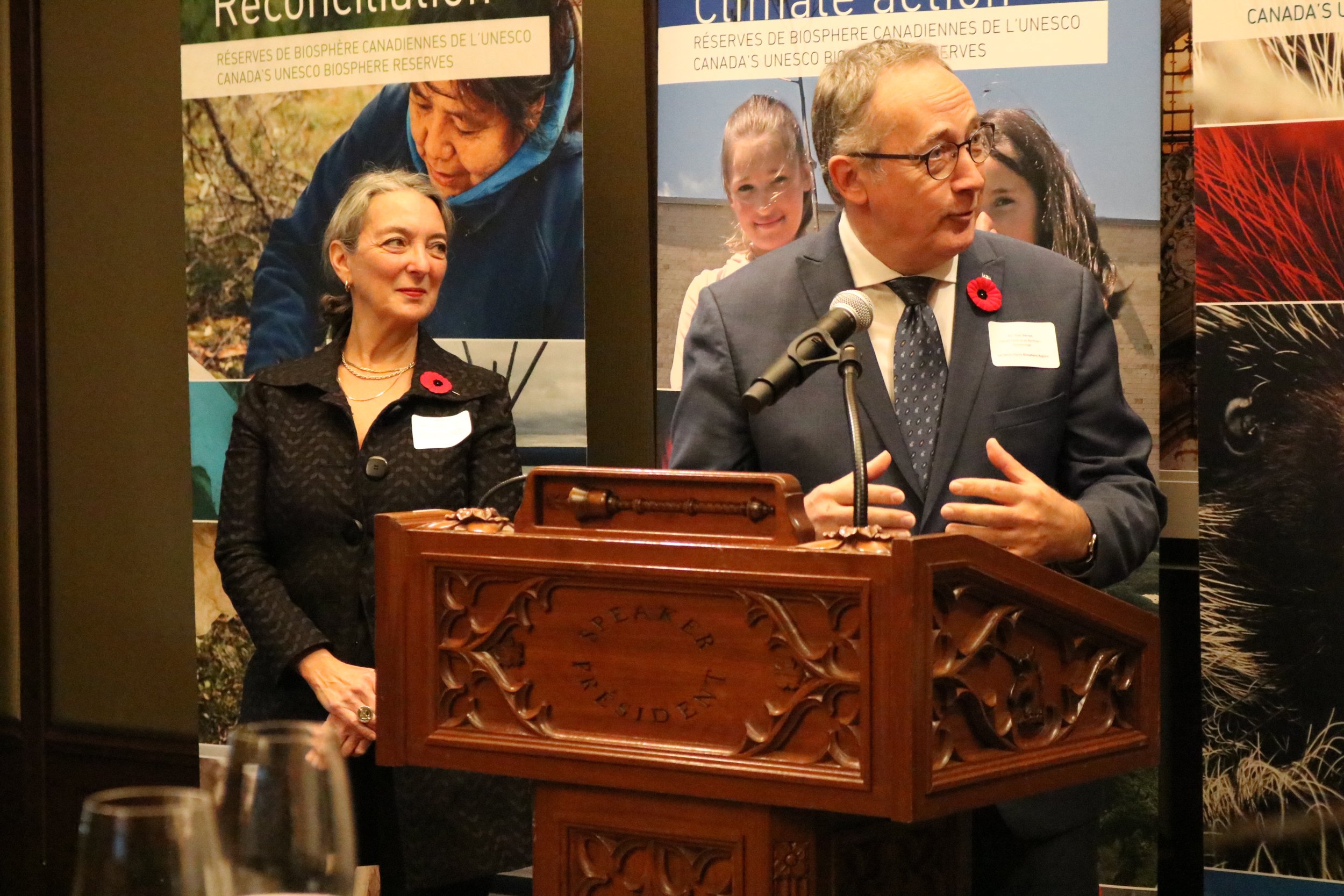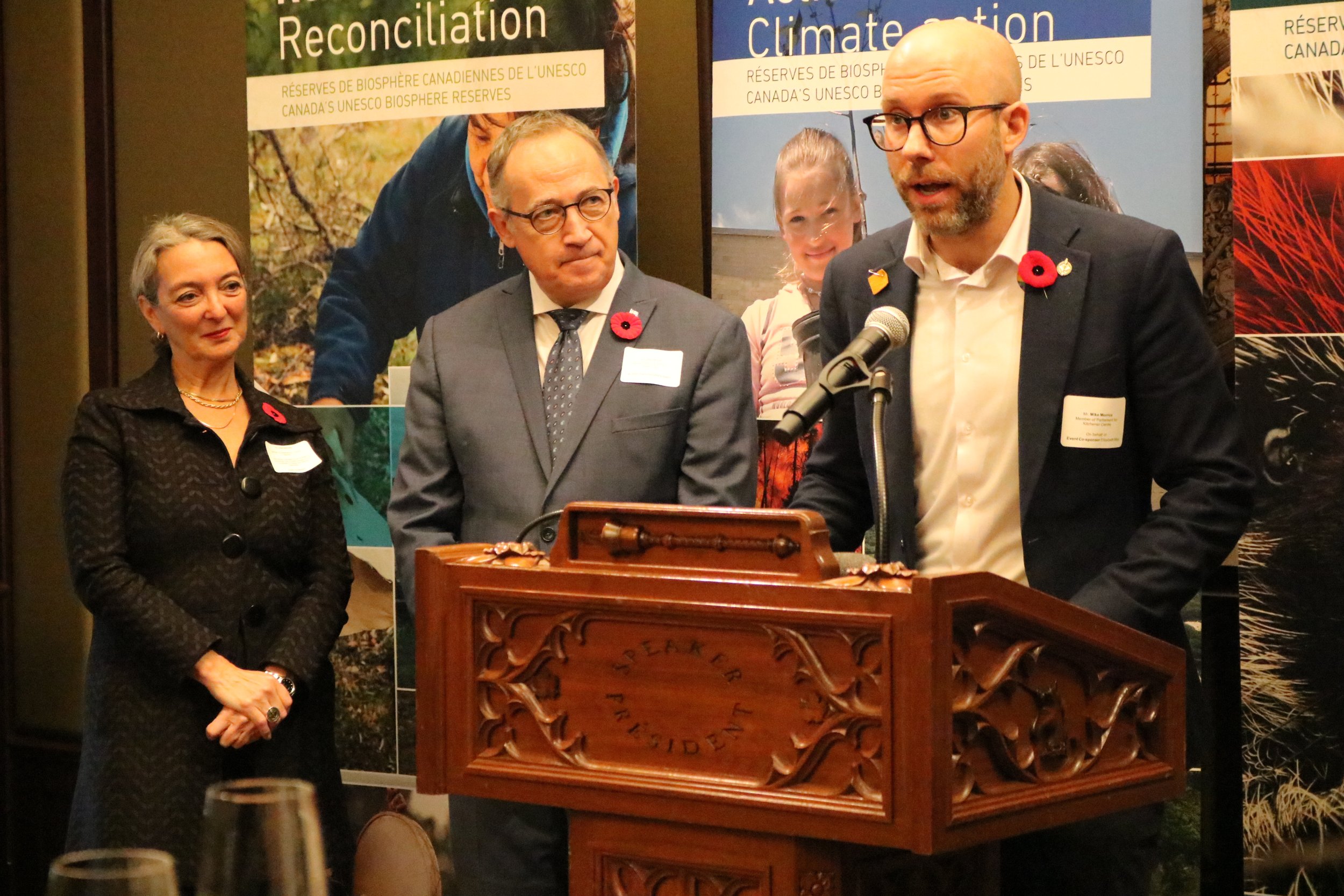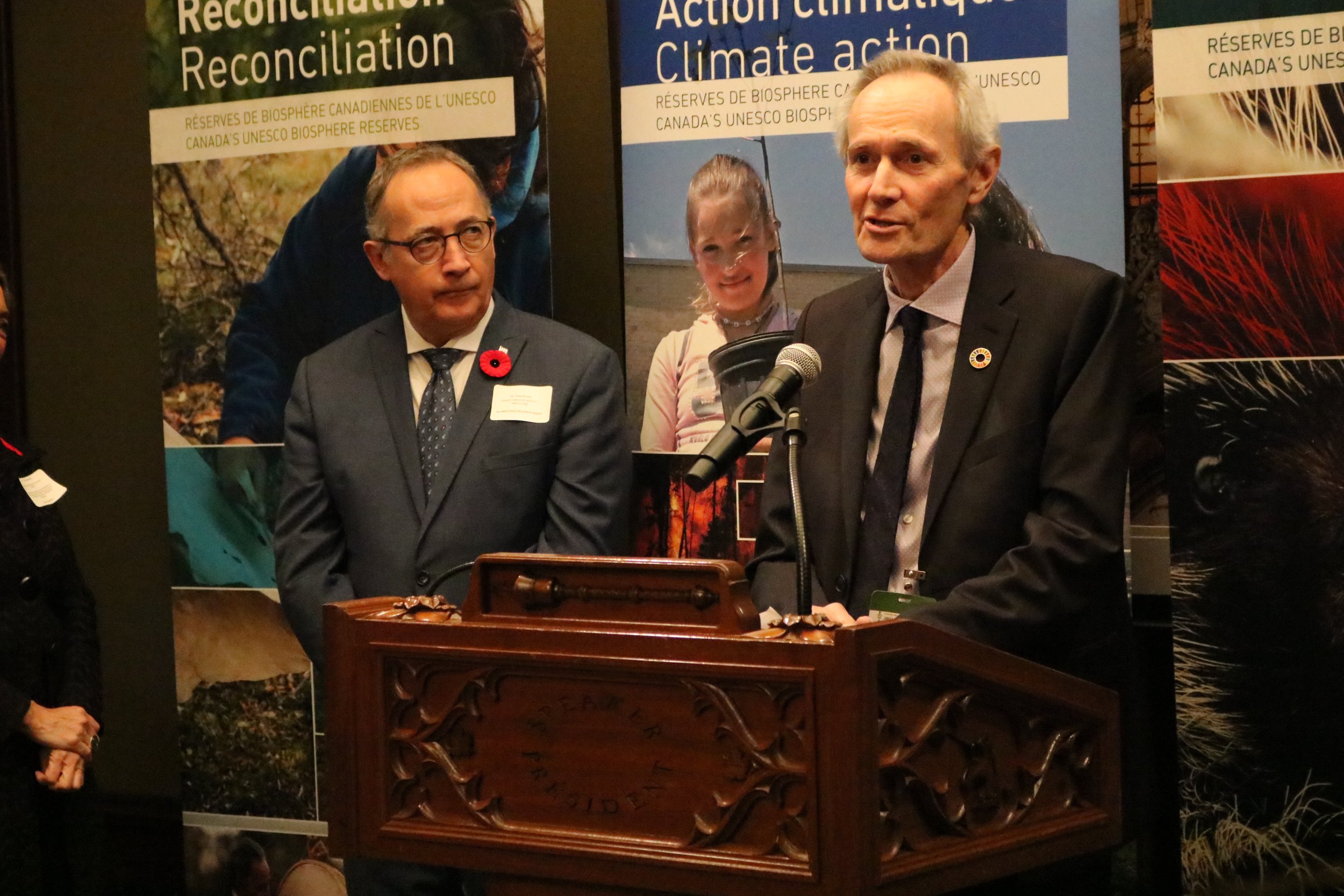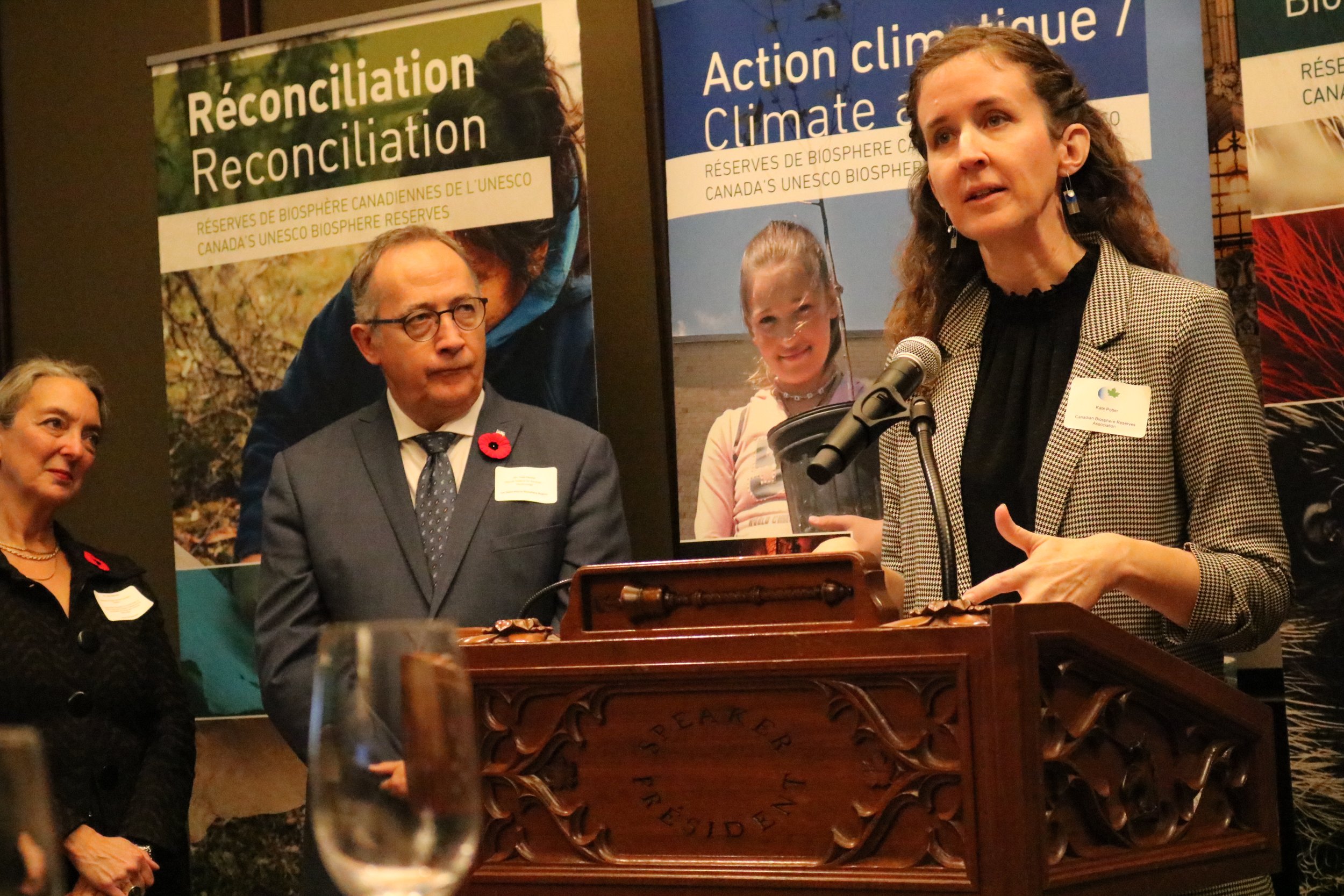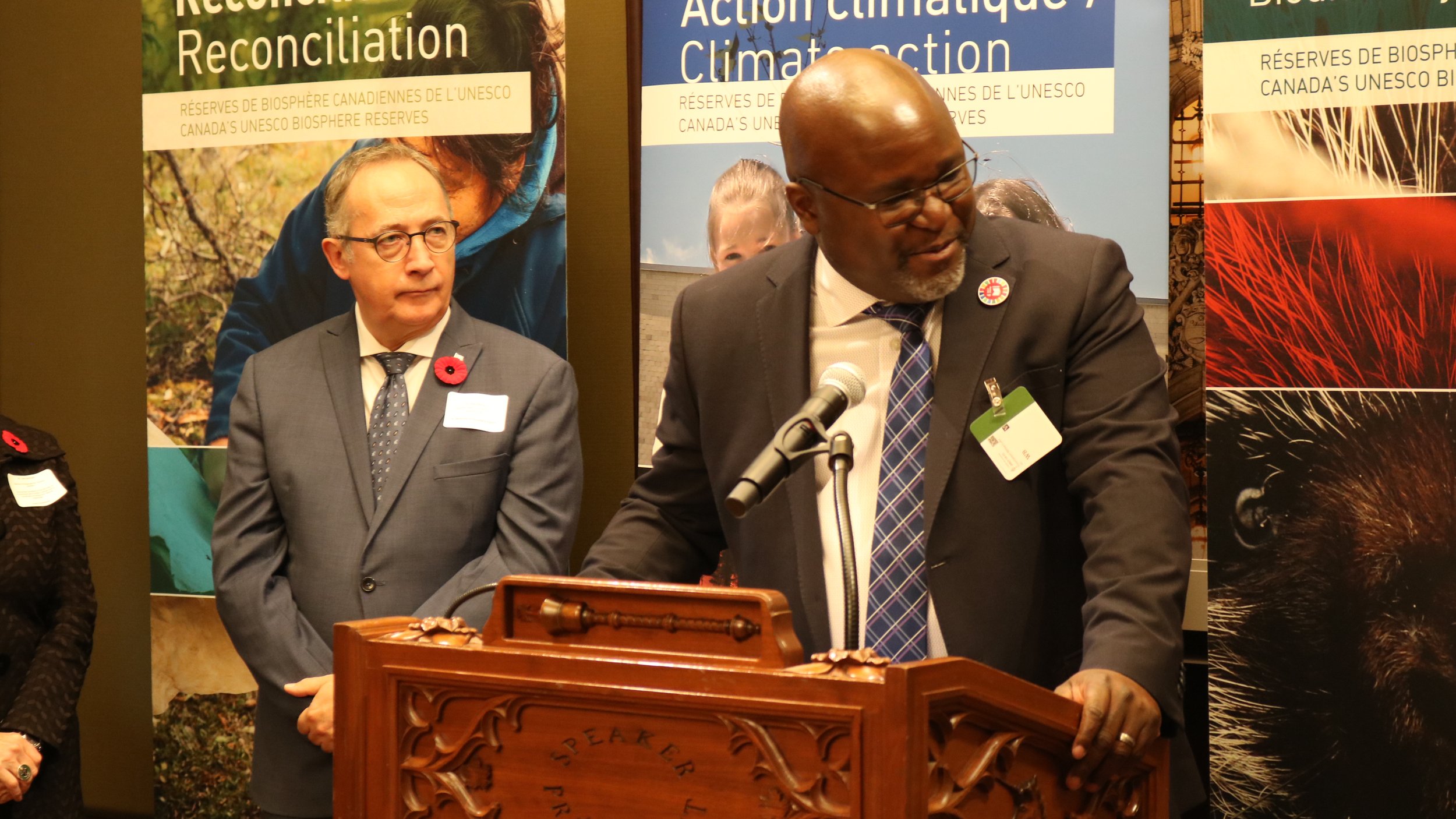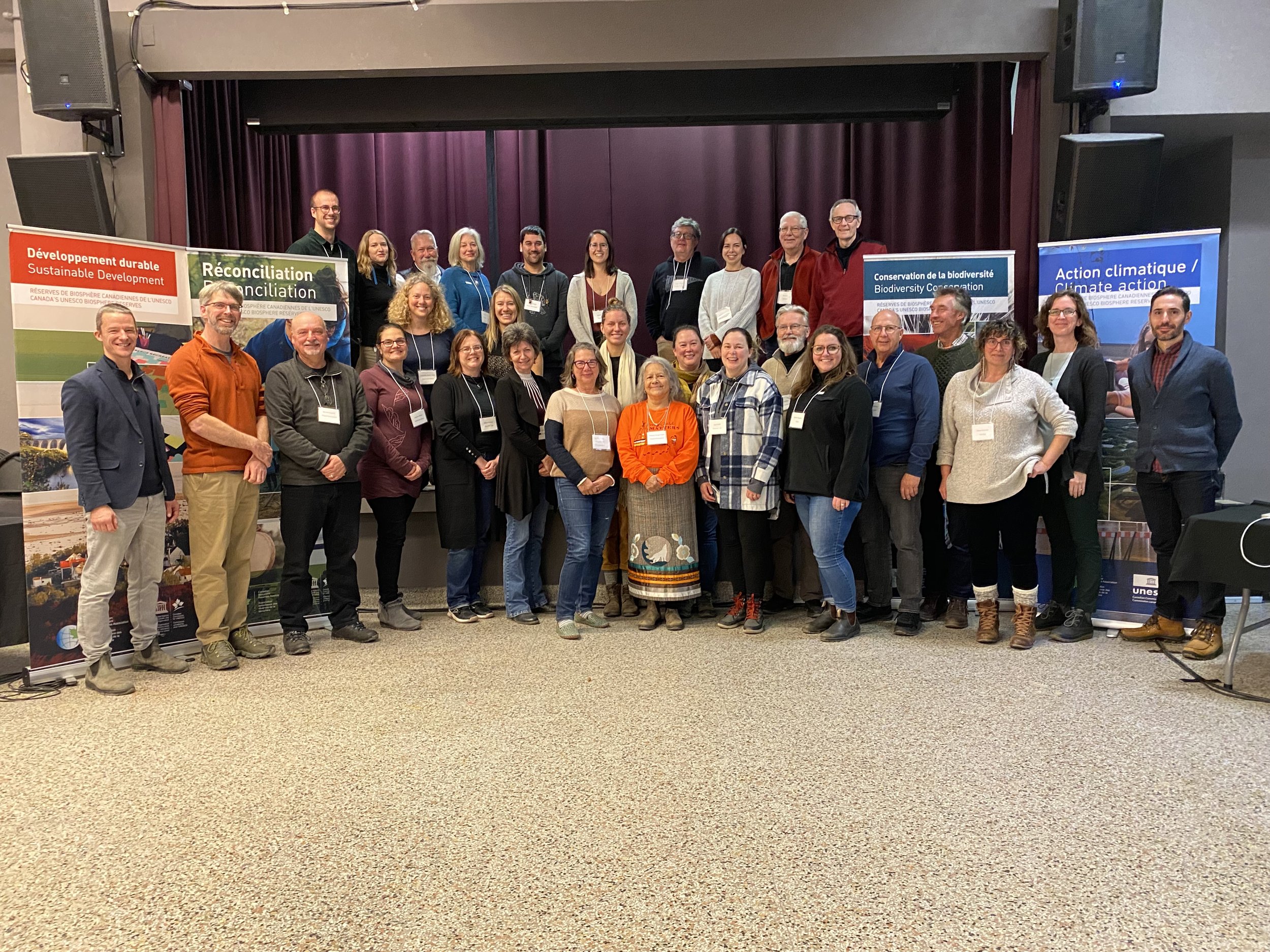
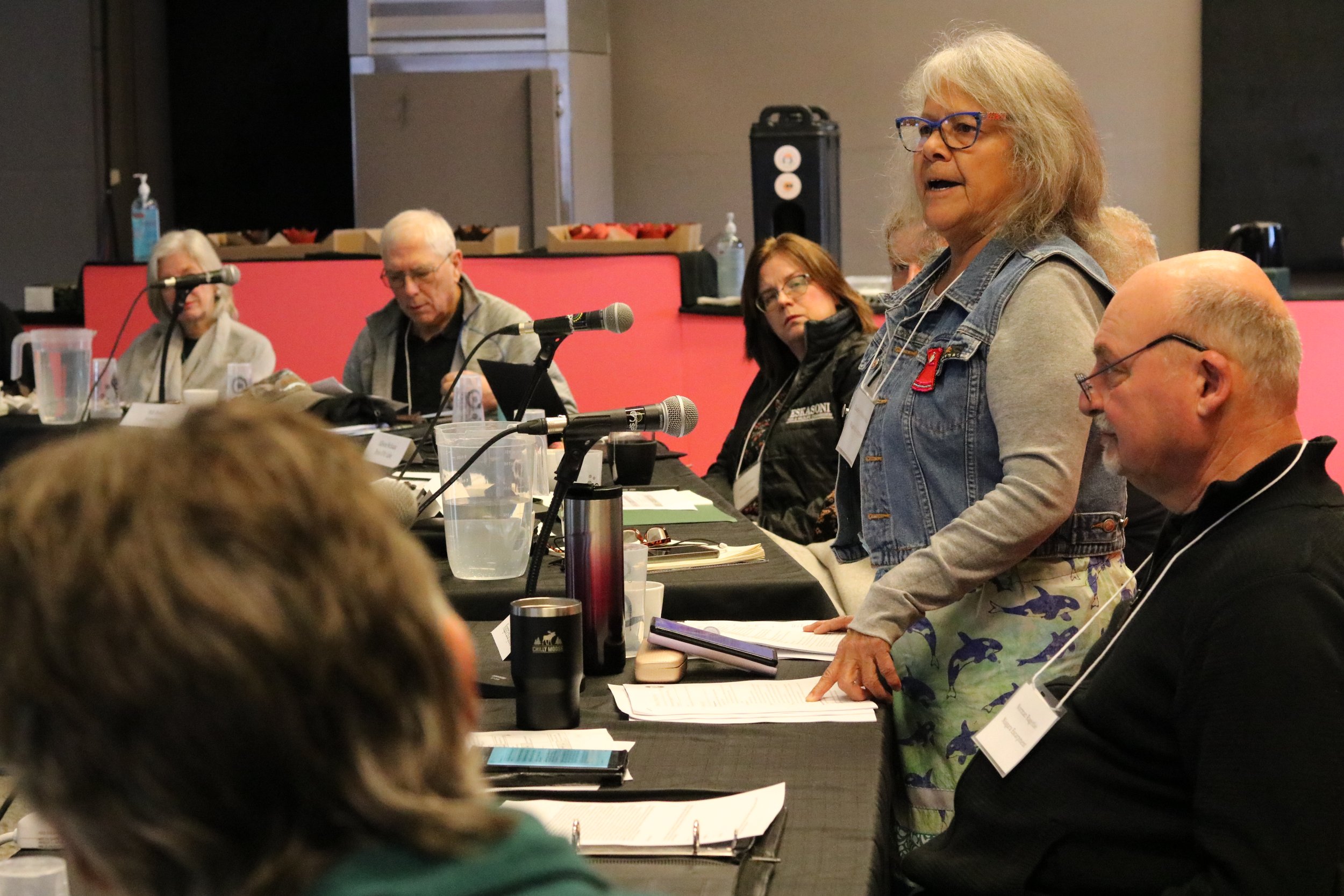
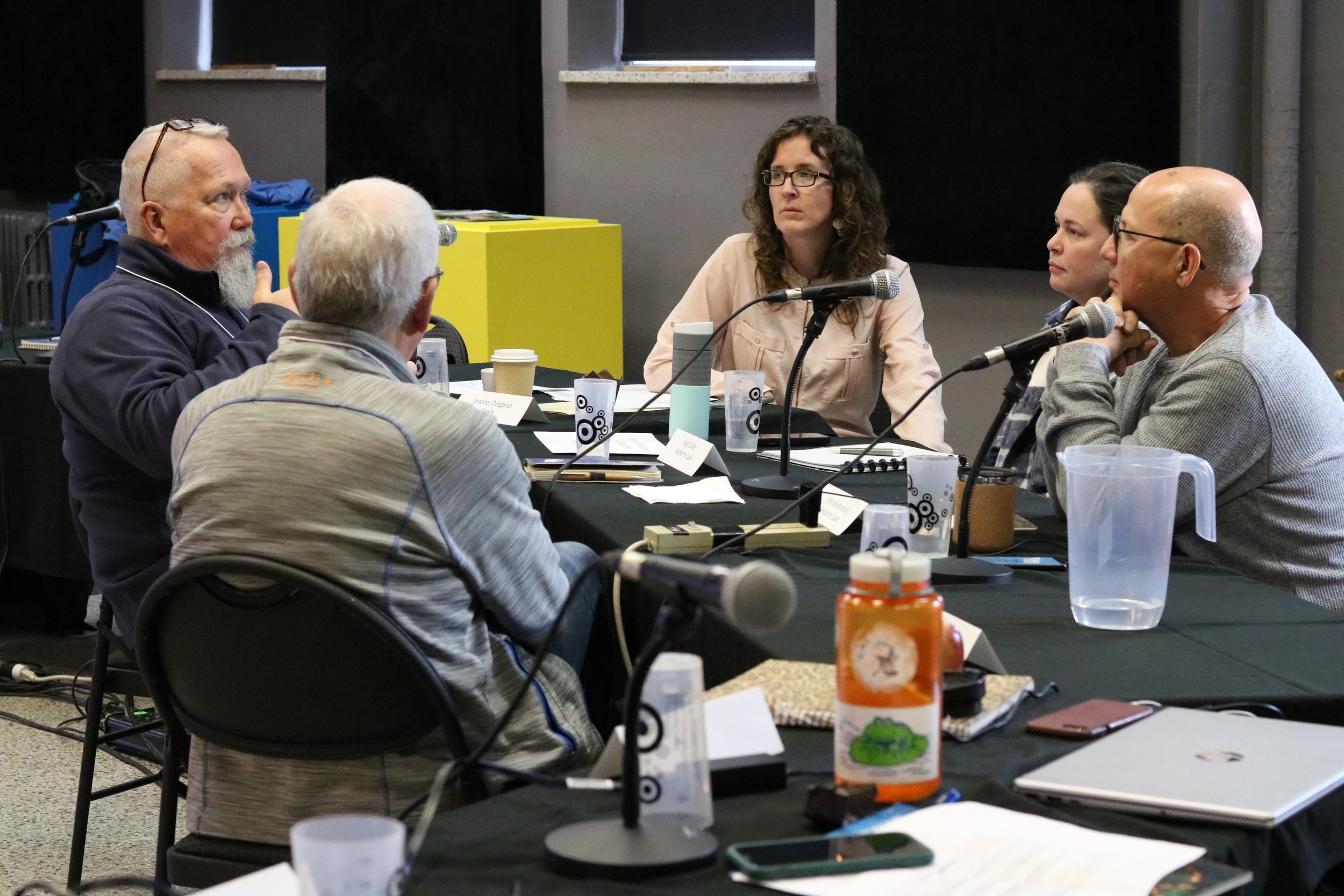


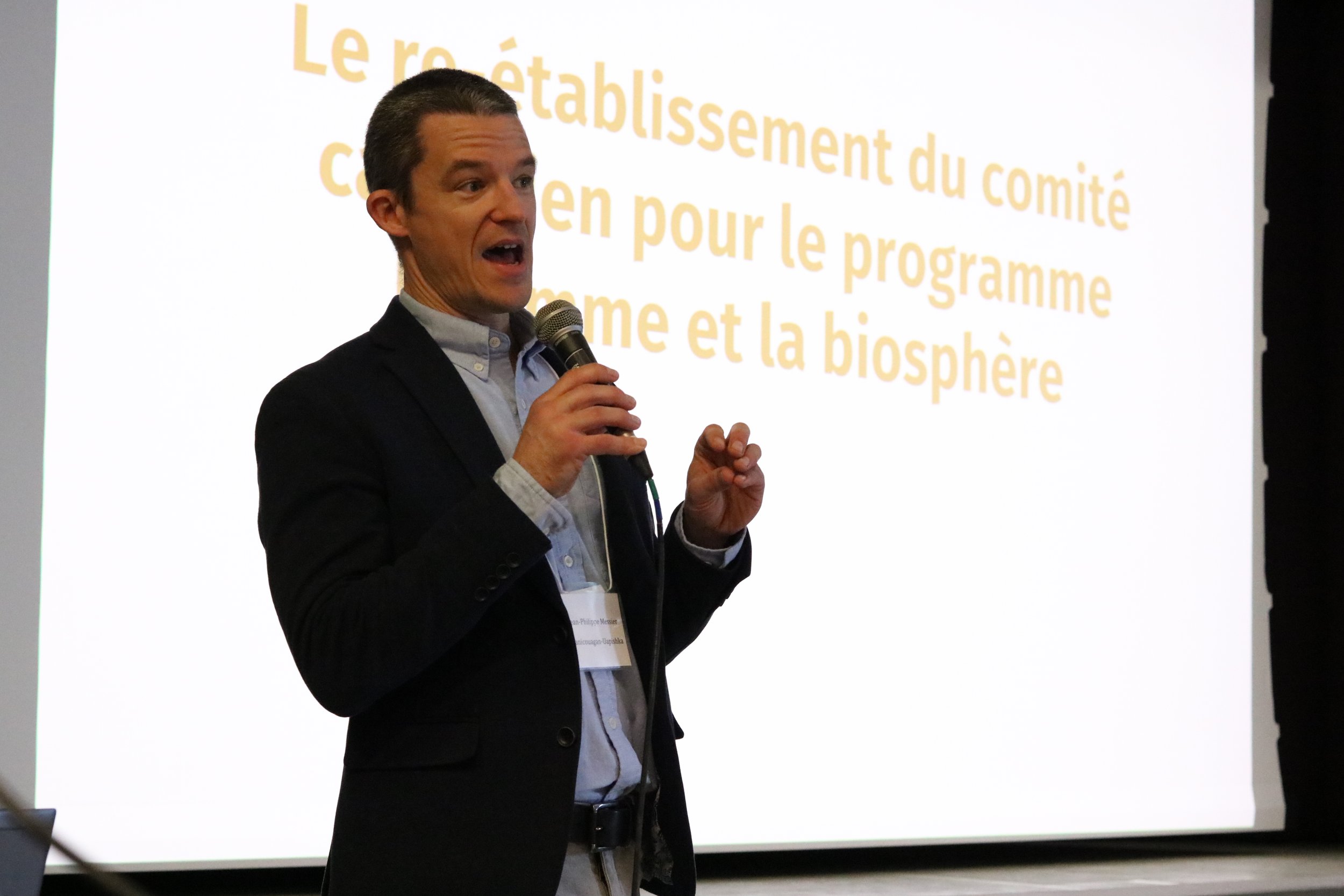
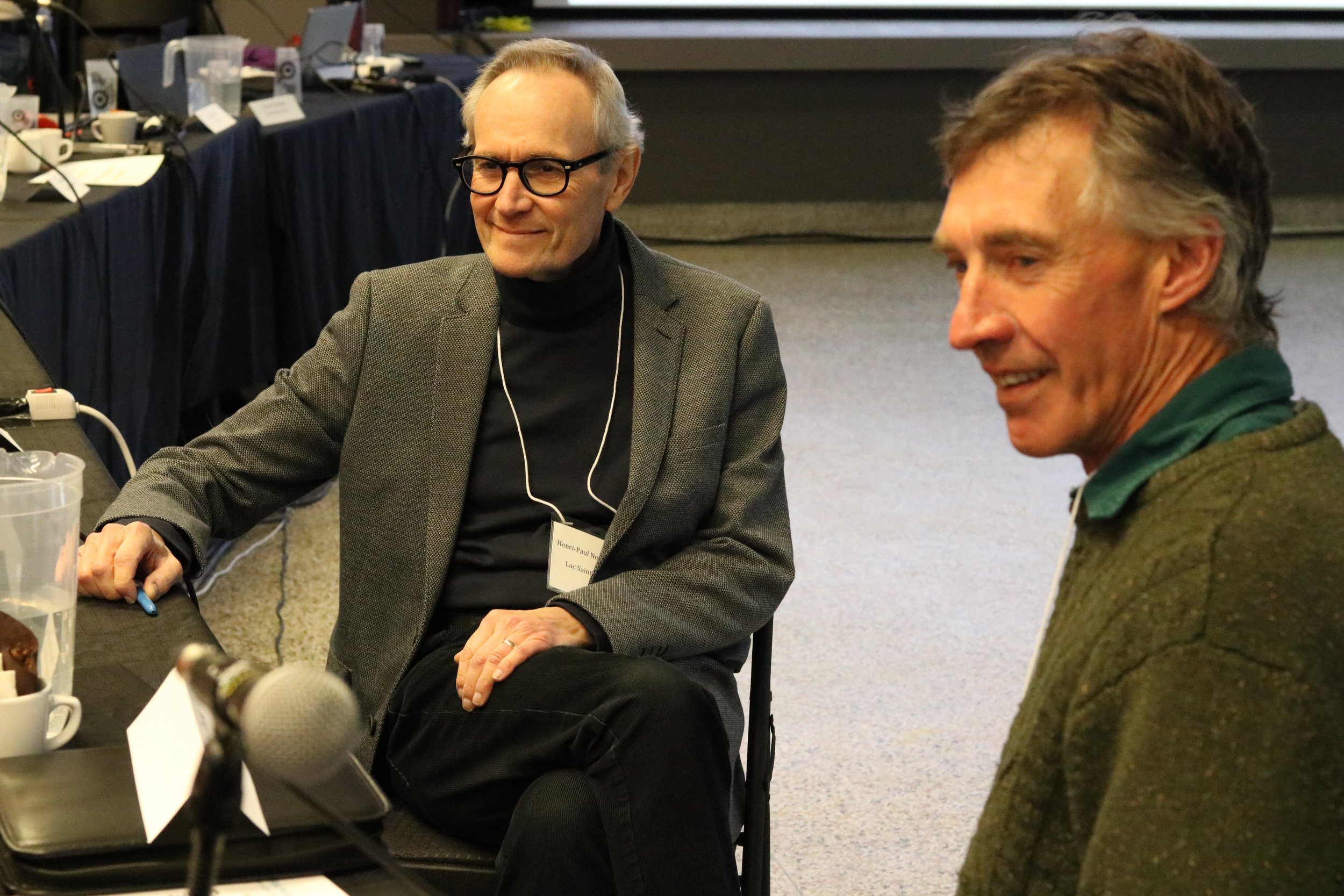
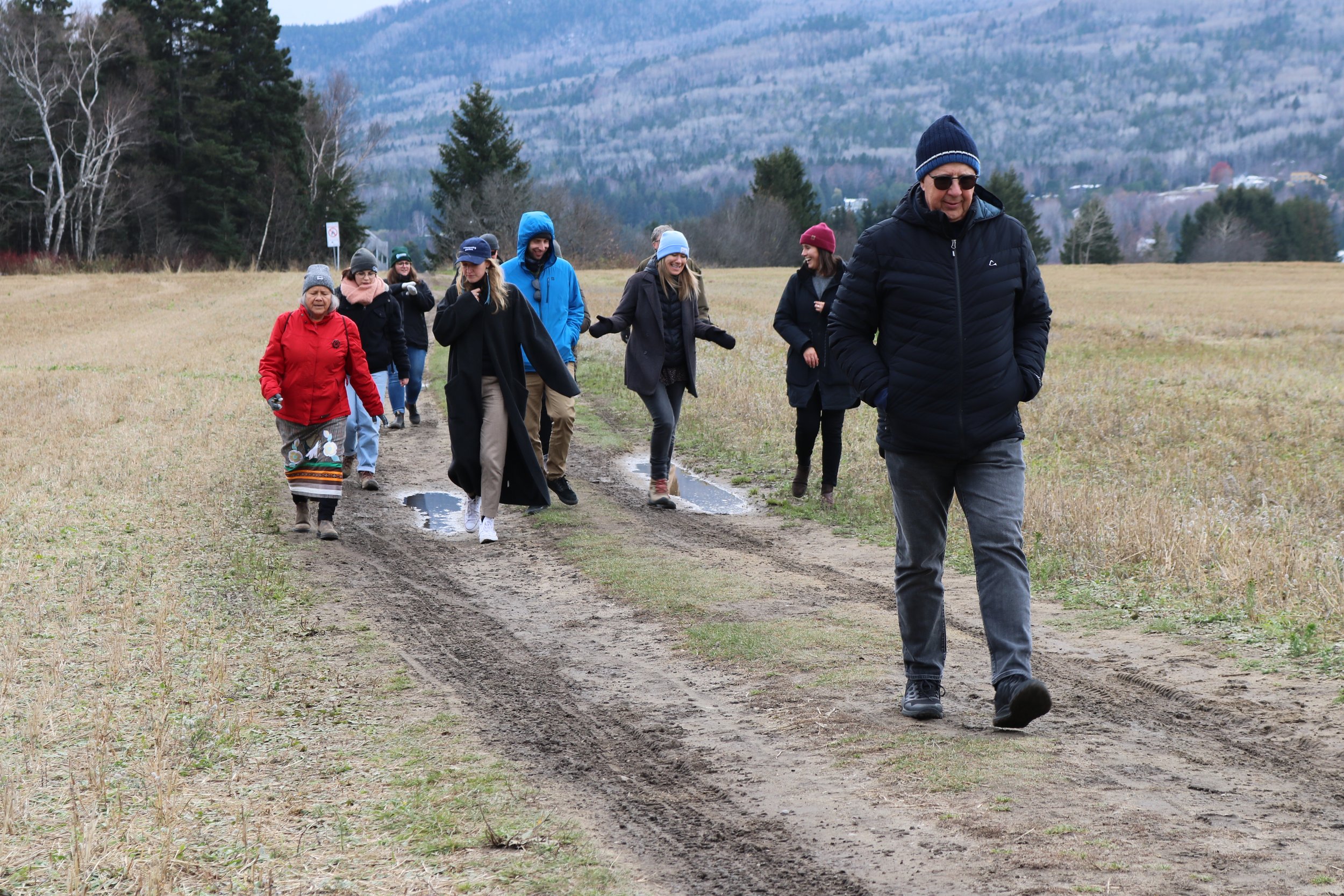


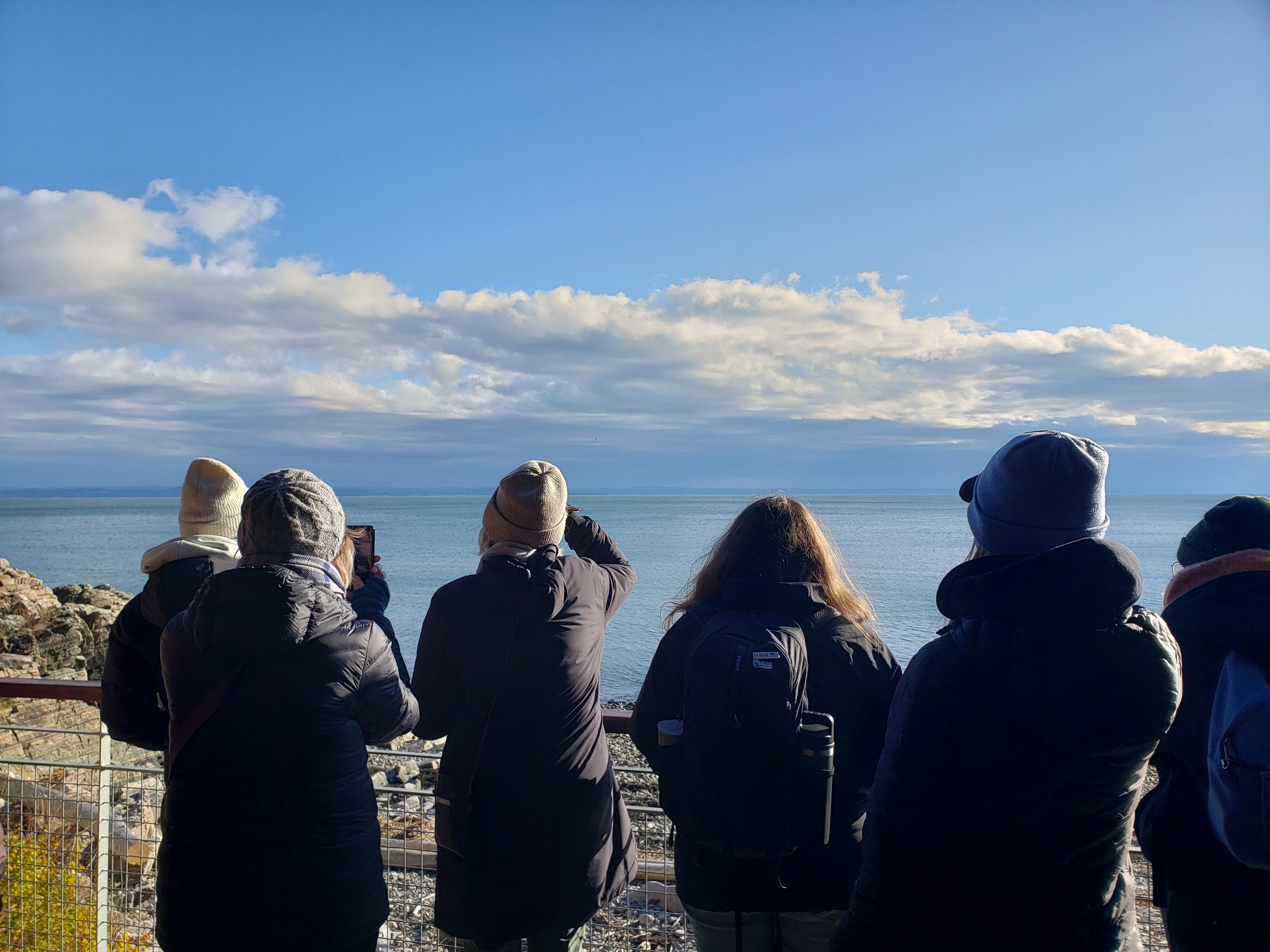
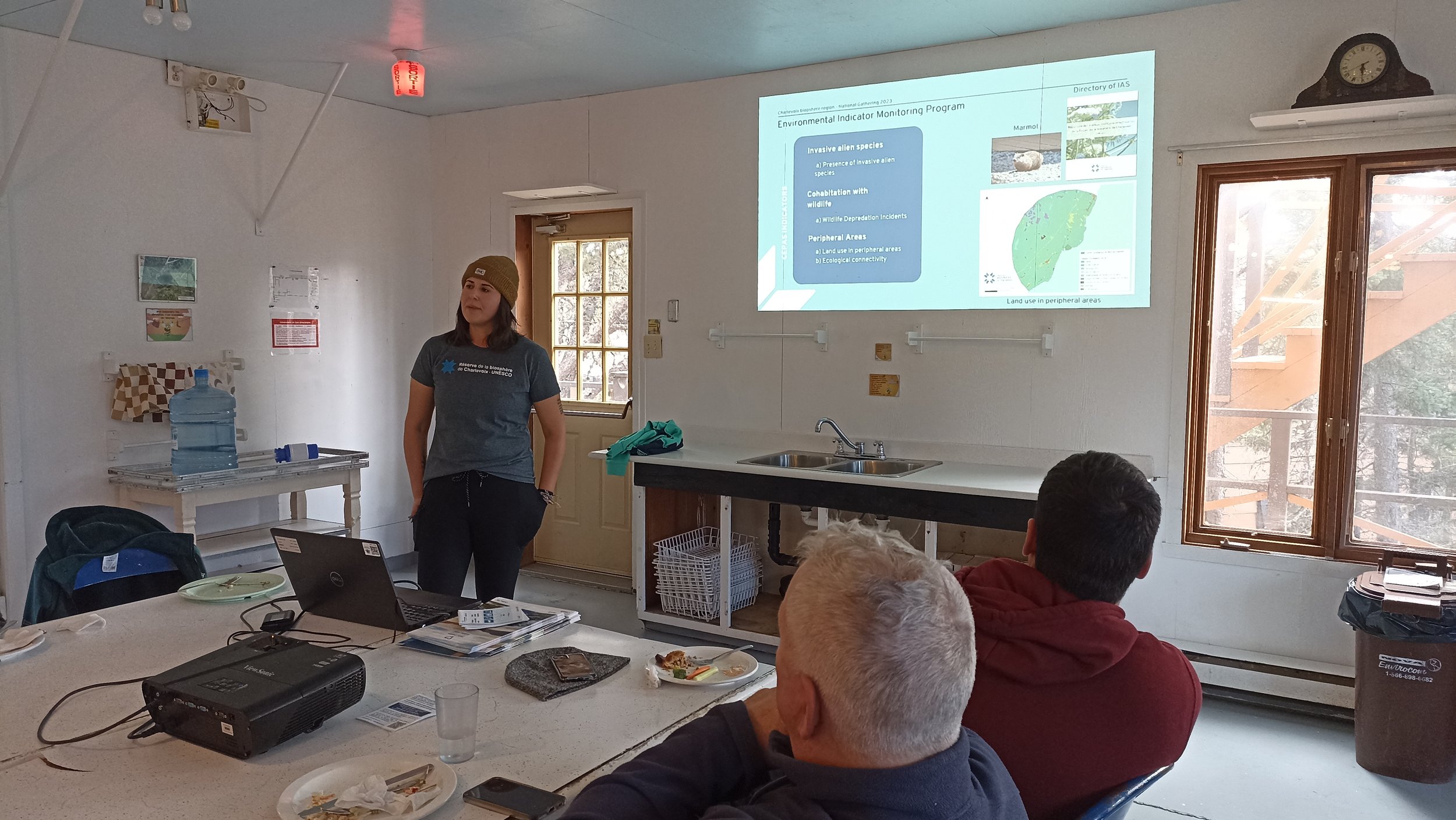
What does it mean to operate as a biosphere region (BR)? How do these independent organizations contribute to a national network? To answer these questions, the Canadian Biosphere Reserves Association (CBRA) brought together representatives from 17 Canadian BRs, as well as staff from the Canadian Commission for UNESCO (CCUNESCO) and Environment and Climate Change Canada (ECCC), for its 2023 Fall National Gathering.
Organized by CBRA in partnership with the Charlevoix Biosphere Region team, the meeting took place between November 2nd and 5th 2023 in the scenic Baie-Saint-Paul (QC). CBRA extends a huge thank you to Julie Campeau and her Charlevoix BR team for the local hosting support. The event brought over 30 people together, with each BR contributing their own stories, challenges, and ideas on how to improve CBRA’s work.
The event's main objective was to delve into in-depth conversations to review CBRA's governance framework, foster peer-to-peer learning exchanges, provide opportunities for networking, and identify ways to showcase the BRs at the national level. Communications, regional collaboration, pathways to reconciliation with Indigenous peoples and CBRA’s impact on the network were also among the discussed topics.
“The National Gathering serves as an opportunity for the network of 19 biosphere regions to come together for peer-to-peer learning, networking, time on the land, and seeing first-hand how our host, in this case the Charlevoix Biosphere Region, operates in their local context. There was a lot of knowledge transferred, lessons learned and laughs shared. We discussed the many scales within CBRA - local, regional, and national - as well as the many themes involved in being a biosphere region,” said Kate Potter, CBRA’s Executive Director.
Participants left inspired and reinvigorated, carrying the resolve to make a meaningful impact through their contributions, both locally and to the national network.
A day to discover Charlevoix
Closing the gathering, participants were invited to a field trip to two of Charlevoix’s natural wonders: the Hautes-Gorges-de-la-Rivière-Malbaie National Park and the Port-au-Saumon Ecological Centre, where they learned more about the region and the biodiversity conservations initiatives taking place there. The group also visited the Charlevoix Astrobleme Observatory to learn about the geological formation of the area, derived from the impact of a meteorite over 400 million years ago.
Rassemblement national de l'ACRB de l'automne 2023 - Apprendre les uns des autres pour construire un réseau plus fort
Que signifie fonctionner en tant que région de biosphère (RB) ? Comment ces organisations indépendantes contribuent-elles au réseau national ? Pour répondre à ces questions, l'Association canadienne des réserves de biosphère (ACRB) a réuni des représentants de 17 RB canadiennes, ainsi que des employés de la Commission canadienne pour l'UNESCO (CCUNESCO) et d'Environnement et Changement climatique Canada (ECCC), à l'occasion de son rassemblement national de l'automne 2023.
Organisée par l'ACRB en partenariat avec l'équipe de la Région de biosphère de Charlevoix, la rencontre s'est déroulée du 2 au 5 novembre 2023 dans la pittoresque municipalité de Baie-Saint-Paul (QC). L'ACRB remercie chaleureusement Julie Campeau et son équipe pour leur soutien et l’accueil qu’ils ont réservé à tous les participants. L'événement a rassemblé plus de 30 personnes, chaque RB apportant ses histoires, ses défis et ses idées sur la façon d'améliorer le travail et la portée de l'ACRB.
L'objectif de l'événement était d'examiner le cadre de gouvernance de l'ACRB, de favoriser les échanges d'apprentissage entre les membres du réseau des régions de biosphère, d'offrir des possibilités de réseautage et d'identifier des moyens de mettre en valeur les RB à l’échelle nationale. Les communications, la collaboration régionale, les voies de la réconciliation avec les peuples autochtones et l'impact de l'ACRB ont également fait partie des sujets abordés.
"Le rassemblement national est l'occasion pour le réseau des 19 régions de biosphère de se réunir pour apprendre des uns et des autres, de travailler en réseau, de passer du temps sur le terrain et de découvrir comment notre hôte, dans ce cas la Région de biosphère de Charlevoix, fonctionne dans son milieu et avec ses partenaires. Il y a eu beaucoup de transfert de connaissances, de leçons apprises et de rires partagés. Nous avons discuté des nombreuses échelles au sein de l'ACRB - locale, régionale et nationale - ainsi que des nombreux thèmes liés au fait d'être une région de biosphère", a déclaré Kate Potter, directrice générale de l'ACRB.
Les participants sont repartis inspirés et revigorés, avec la volonté d'avoir un impact significatif grâce à leurs contributions, tant au niveau local qu'au niveau du réseau national.
Une journée pour découvrir Charlevoix
Pour conclure la rencontre, les participants ont eu la chance de visiter de deux merveilles naturelles de Charlevoix : le parc national des Hautes-Gorges-de-la-Rivière-Malbaie et le Centre écologique de Port-au-Saumon, où ils ont pu en apprendre davantage sur la région et les initiatives de conservation de la biodiversité qui s'y déroulent. Le groupe a également visité l'Observatoire d'astroblème de Charlevoix pour découvrir la formation géologique de la région, issue de l'impact d'une météorite il y a plus de 400 millions d'années.


